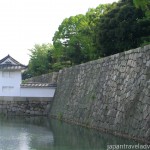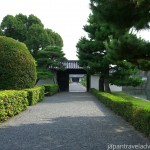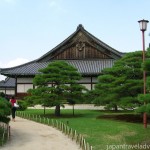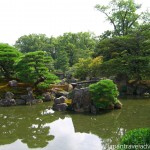
Nijo Castle in Kyoto was built in 1603 as the official Kyoto residence of the first Tokugawa shogun, Ieyasu. It is not your typical Japanese castle, but more of a palace style castle. Nijo Castle was constructed as a demonstration of the shogun’s power and prestige and to signal the demise of the emperor. The castle has some amazing architecture and one of the most beautiful gardens in Japan. Nijo Castle was designated a UNESCO World Heritage Site in 1994.
Features of Nijo Castle
Nijo Castle Fortifications
Nijo Castle consists of two concentric rings of fortification, both consisting of stone walls and a moat. The inner walls contain the Honmaru Palace. The Ninomaru Palace and Garden are located between the two main rings of fortification.
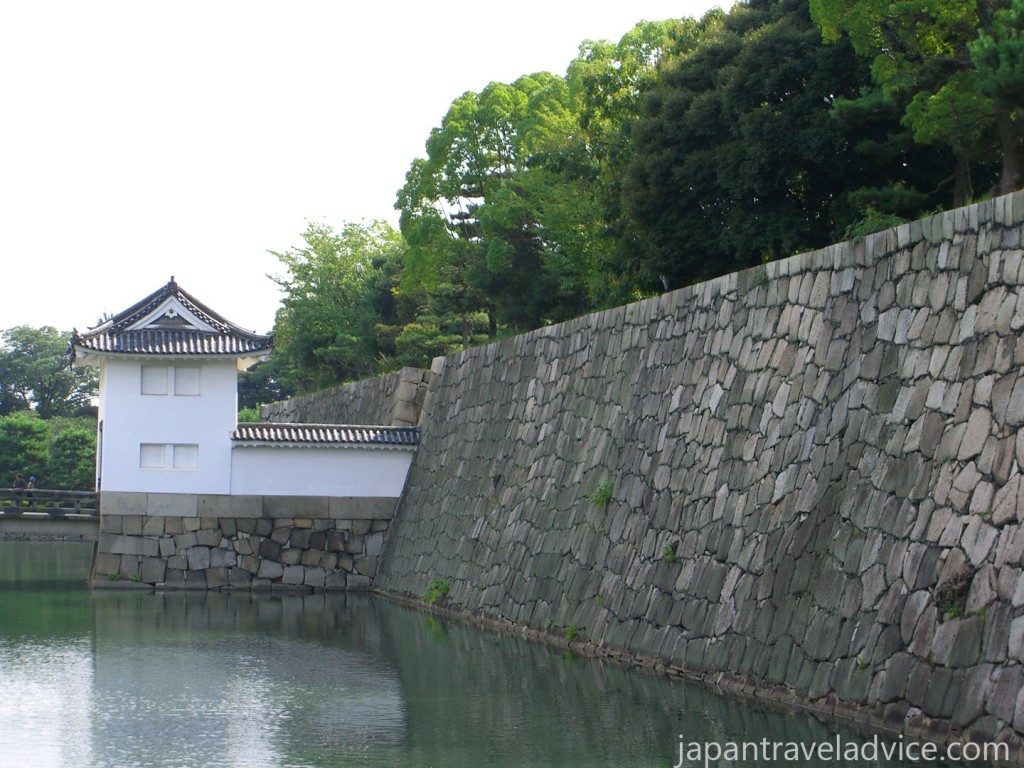
Ninomaru Palace
The Ninomaru Palace is almost entirely built of hinoki cypress and features gold leaf decorations and elaborate wood carvings. It was built in order to impress visitors of the power and wealth of the shogun. The palace is divided into five buildings with various chambers. It served as both the residence and office of the shogun during his visits to Kyoto from his capital in Edo. Only those of the highest rank were permitted to enter the inner buildings. The palace rooms are covered in tatami mats and have elegantly decorated ceilings. The walls and sliding doors are decorated with paintings by artists from the Kano school. A feature is the fourth chamber (Ohiroma Yon-no-ma) which has some spectacular screen paintings.

Ninomaru Palace Garden
The Ninomaru Palace Garden is a must see and one of the most beautiful traditional landscape gardens in Japan. It was designed by the tea master and landscape architect Kobori Enshu. It features a large pond with ornamental stones and manicured pine trees.

Nightingale Floors of Nijo Castle
A feature of Nijo Castle is the striking Nightingale Floors (uguisubari) in the corridors, which were devised as a safety measure against treachery and sneak attacks by assassins. The shogun, Ieyasu had the interior fitted with these special floors that squeak at every move, making it difficult for intruders to move about quietly. There are also concealed chambers in some of the rooms, where his bodyguards could hide and keep watch over proceedings.
Honmaru Palace
The Honmaru Palace, was the main circle of defence for the castle. It featured a second palace complex and the castle’s five storey keep. Unfortunately, both structures were destroyed by fires in the 18th century. Today the Honmaru Palace is only open for special viewing in the autumn.

History of Nijo Castle
Nijo Castle was built in 1603 as the official Kyoto residence of Tokugawa Ieyasu, the first shogun of the Edo Period. The castle’s palace buildings were completed by his grandson Iemitsu, in 1626 and the castle was further expanded to include a five storey keep.
The keep was struck by lightning in 1750 and burned to the ground. The Honmaru Palace was also destroyed by fire in 1788.
The Tokugawa Shogunate ended in 1867, and the Ninomaru Palace was used as the stage for the declaration returning the authority back to the Imperial Court. Nijo Castle was used as an imperial palace before being donated to the city of Kyoto in 1939.
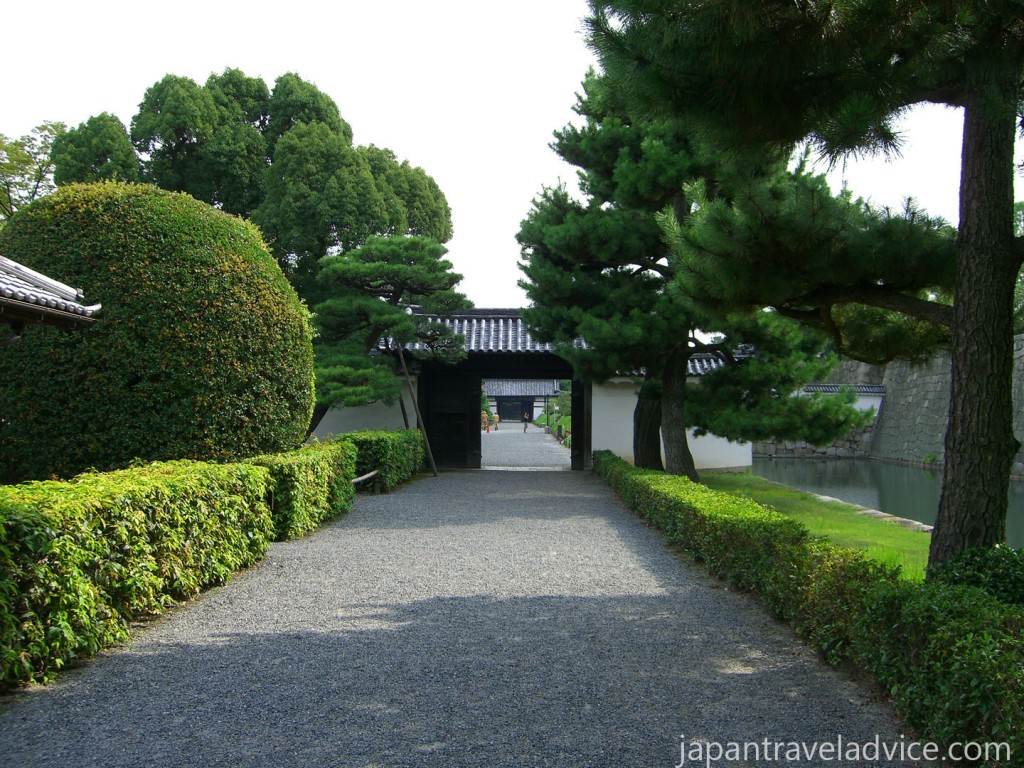
Opening Hours
The Ninomaru Palace and Garden are open from 8:45 am to 5:00 pm
Last admission is at 4:00 pm
Nijo Castle is closed from 26 December to 4 January
Nijo Castle is also closed Tuesdays in January, July, August and December
Entry Fee
Admission to the Ninomaru Palace and Garden is 600 yen
How to Get There
You can reach Nijo Castle by taking bus No 9, 50 or 101 from JR Kyoto Station to the Nijo-jo-mae bus stop. It takes around 15-20 minutes and costs 220 yen. You can also use the Tozai line subway to the Nijo-jo-mae station.
Address: 541 Nijojo-cho, Horikawa-nishiiru, Nijo-dori, Nakagyo-ku, Kyoto
Best Time to Go
Nijo Castle can be visited all year round, but the Palace Garden and Castle Grounds are at their most beautiful during spring and autumn. The castle grounds feature around 400 cherry trees, which are at their best in April, and Japanese maples and ginkgo with amazing autumn colours in late November.
Tip: Just south of Nijo Castle is the Shinsen-en Garden, which is worth a visit. It formed part of the original imperial palace of Kyoto that was abandoned in 1227.
Photo Gallery
Things to Do in Kyoto
- Kiyomizu-dera Temple – One of the most famous landmarks in Kyoto and a UNESCO World Heritage Site
- KInkakuji Temple – Temple of the Golden Pavilion and a UNESCO World Heritage Site

